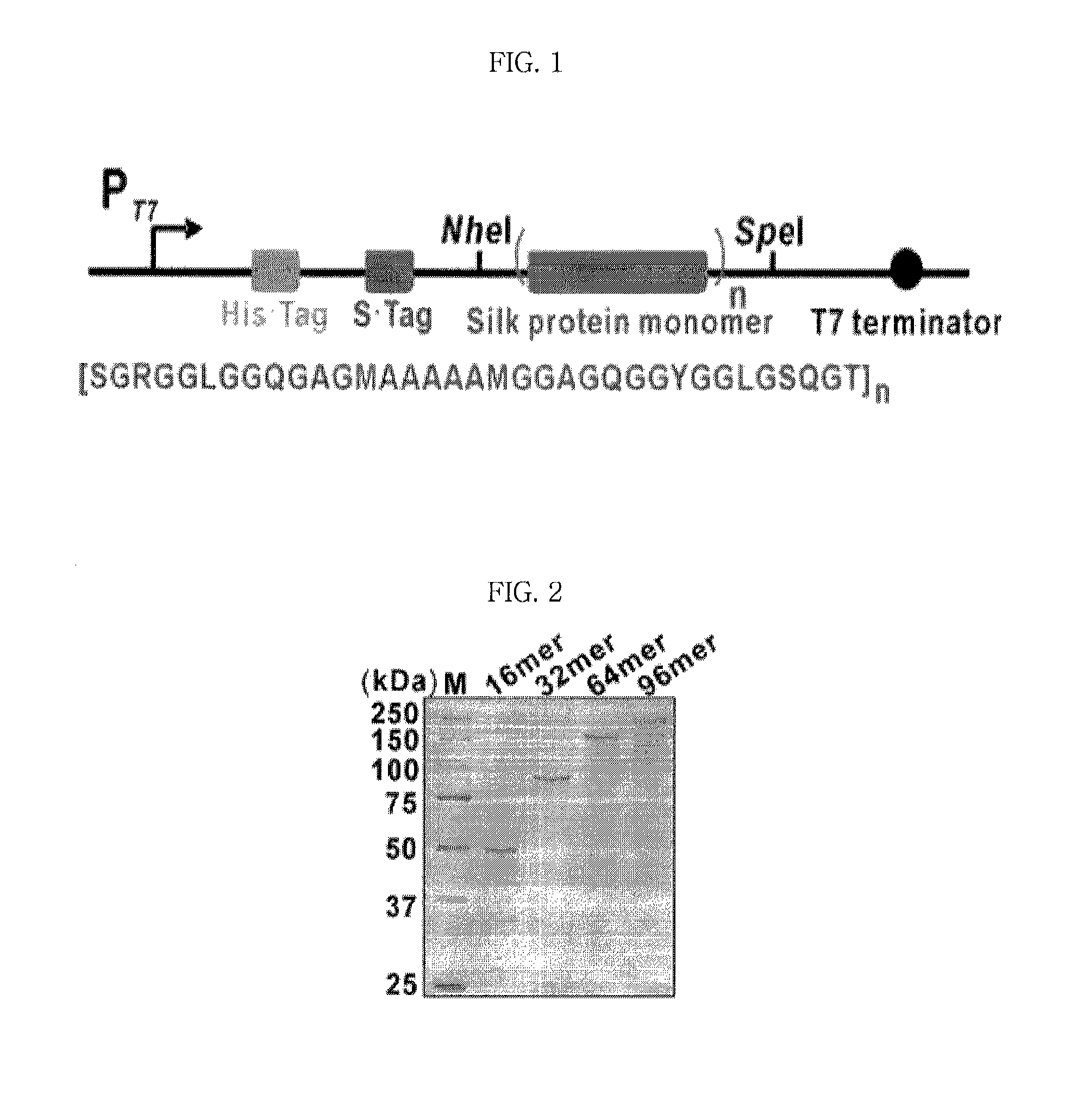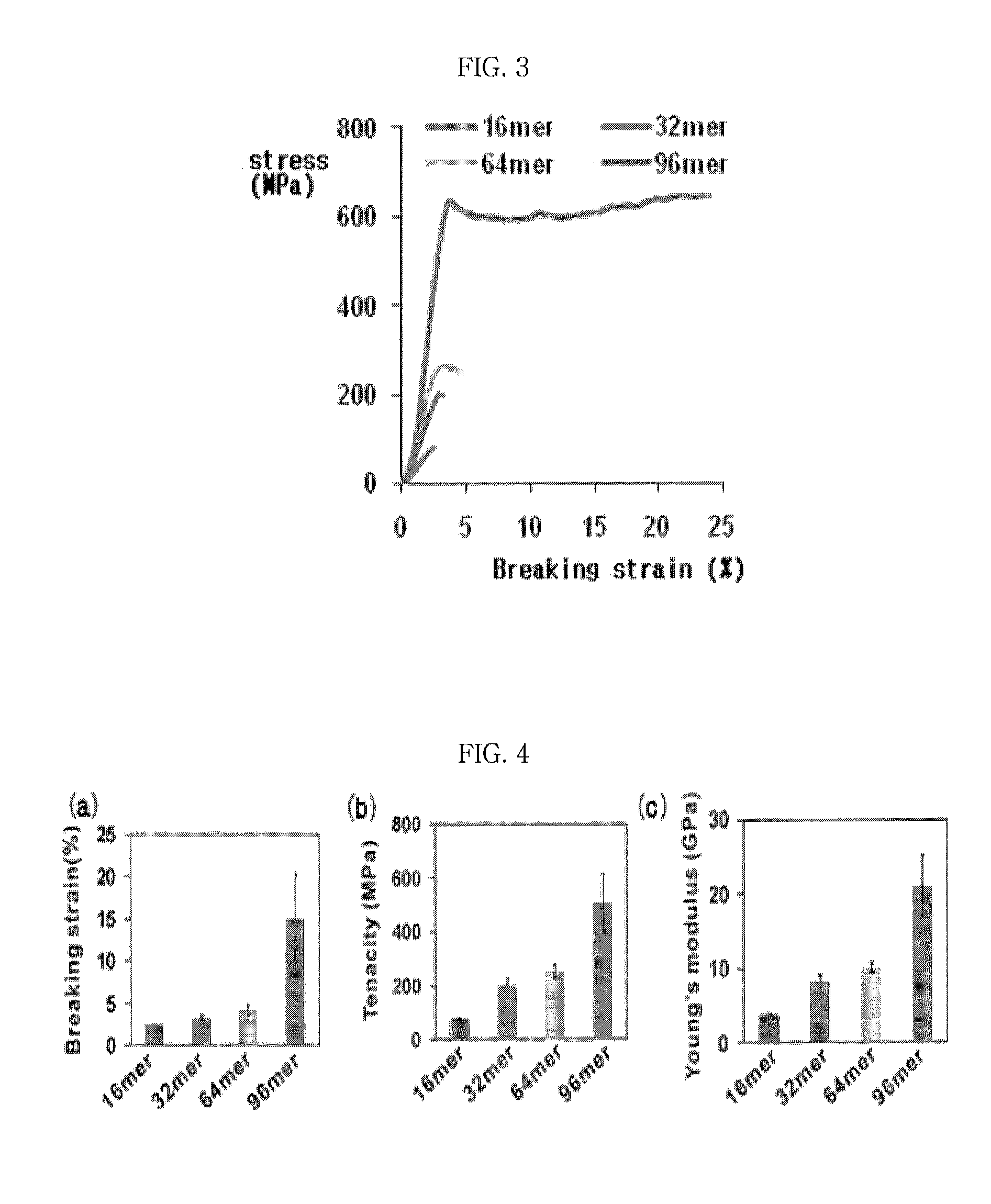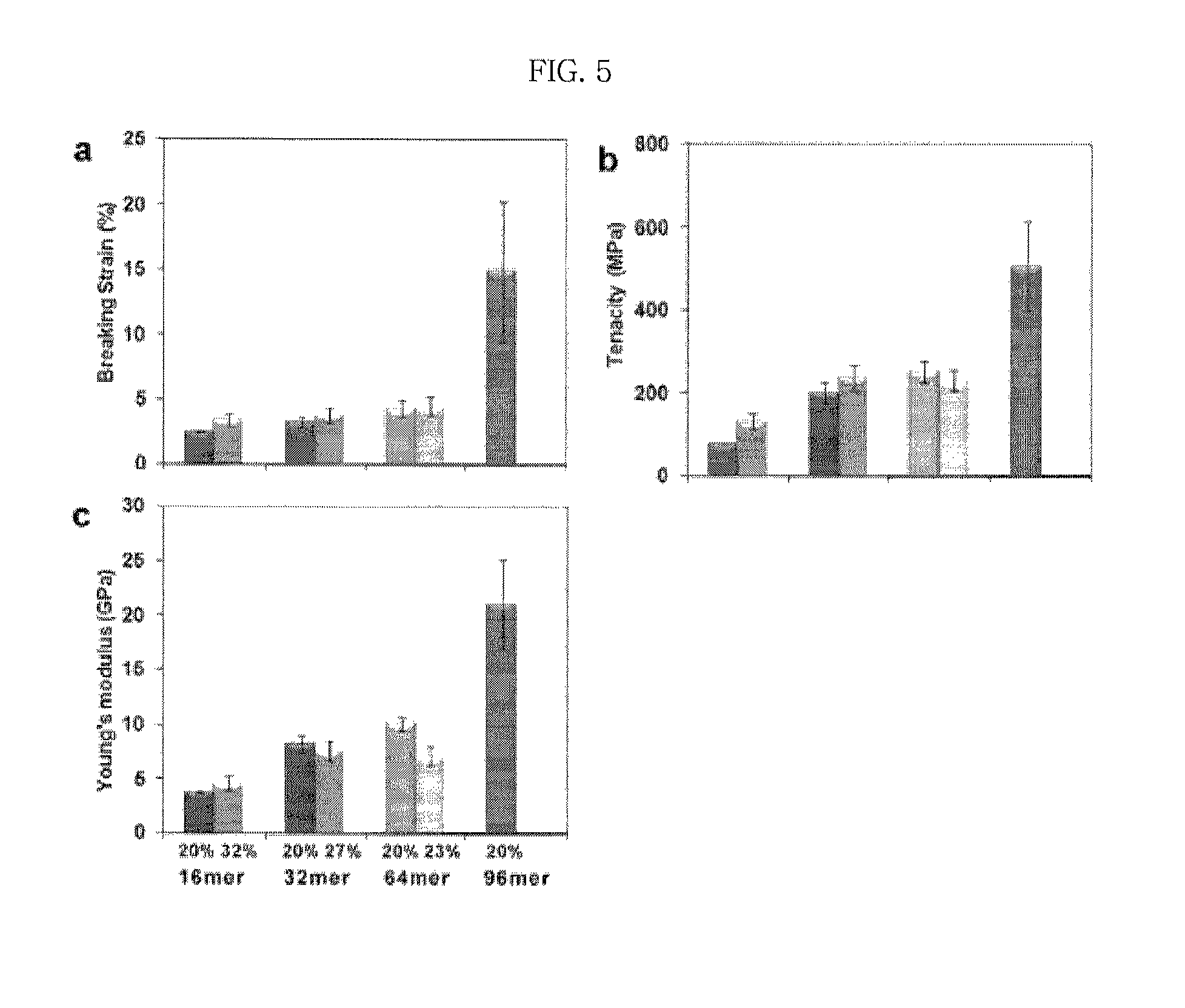High-molecular-weight recombinant silk or silk-like protein and micro- or nano-sized spider silk or silk-like fiber produced therefrom
- Summary
- Abstract
- Description
- Claims
- Application Information
AI Technical Summary
Benefits of technology
Problems solved by technology
Method used
Image
Examples
example 1
Construction of vectors pSH32, pSH48, pSH64, pSH80 and pSH96 for Expression of High-Molecular-Weight Silk Proteins and Vector for Expression of Nucleotide Sequence Encoding Glycine tRNA and Preparation of Silk Proteins Having Various Molecular Weights
[0052]1-1: Construction of pSH32, pSH48, pSH64, pSH80 and pSH96
[0053]All procedures for genetic manipulation were carried out according to standard methods (Sambrook et al., Molecular cloning: a laboratory manual, 2nd Ed., Cold Spring Harbor Laboratory Press, Cold Spring Harbor, N.Y., 1989). In order to construct the recombinant plasmid pSH32, the plasmid pSH16a (Lee et al., Theories and Applications of Chem. Eng., 8(2):3969, 2002) (SEQ ID NO: 13) was digested with the restriction enzymes SpeI and NheI (New England Biolabs, USA) to obtain a 1.7-kb fragment which was then treated with the restriction enzyme SpeI and ligated to the dephosphorylated plasmid pSH16a, thereby obtaining the recombinant plasmid pSH32 comprising a nucleic acid s...
example 2
Production of Spider Silk Fiber by Wet-Spinning Method—Effect of Molecular Weight on Mechanical Properties of Wet-Spun Fiber
[0066]Each of the recombinant silk proteins prepared in Example 1-2 was dissolved in hexafluoroisopropanol (HFIP; Sigma), a spinning solvent, thus preparing spinning dope solutions. Each of the dope solutions was extruded using a pump (KDS100; KD Scientific) at a rate of 1-2 ml / hr. With the silk protein concentration of the dope solutions, all the silk proteins were spun at a spider silk protein concentration of 20% (w / v), which was the maximum operational concentration for the native-sized 96-mer protein due to the solubility and viscosity. At this time, each dope solution was extruded from a 1-ml Kovax syringe through a 26-G syringe needle (Korea Vaccine Co., Ltd.) into a solidification bath containing 90% (v / v) methanol.
[0067]After the spinning process, each of the spun fibers was allowed to stand in the solidification bath for 20 minutes and was hand-drawn ...
example 3
Effect of Recombinant Silk Protein Concentrations of Dope Solutions on Properties of Wet-Spun Fibers
[0072]In order to examine the effects of the recombinant silk protein concentrations of dope solutions on the properties of spun fibers, each of the 16-mer, 32-mer and 64-mer proteins was spun at the maximum operational concentrations, and test results for the spun fibers were compared with the results of Example 2.
[0073]As a result, as shown in FIG. 5a-5c, when the concentration of the 16-mer protein was increased from 20% to the maximum concentration of 30%, the properties of the fiber spun from the protein were significantly improved. However, when the concentration of the 32-mer protein was increased from 20% to the maximum concentration of 27%, the breaking strain and tenacity of the fiber were increased, but these increases were not statistically significant. In addition, the maximum operational concentration of the 64-mer protein was 23%, the mechanical properties of the fiber ...
PUM
| Property | Measurement | Unit |
|---|---|---|
| Weight | aaaaa | aaaaa |
| Fraction | aaaaa | aaaaa |
| Fraction | aaaaa | aaaaa |
Abstract
Description
Claims
Application Information
 Login to View More
Login to View More - R&D
- Intellectual Property
- Life Sciences
- Materials
- Tech Scout
- Unparalleled Data Quality
- Higher Quality Content
- 60% Fewer Hallucinations
Browse by: Latest US Patents, China's latest patents, Technical Efficacy Thesaurus, Application Domain, Technology Topic, Popular Technical Reports.
© 2025 PatSnap. All rights reserved.Legal|Privacy policy|Modern Slavery Act Transparency Statement|Sitemap|About US| Contact US: help@patsnap.com



